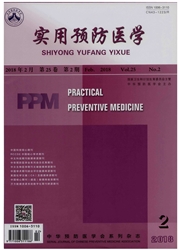

 中文摘要:
中文摘要:
目的 探讨建立稳定糖尿病合并梅毒兔模型的方法,观察其14周病程发展过程,并在病程结束后,观察实验兔心脏、肺、肝脏、肾脏、睾丸组织病理损伤情况并初步探讨原因。方法 四氧嘧啶诱导法构建稳定的单独糖尿病兔模型(DM组);睾丸接种梅毒螺旋体感染梅毒构建稳定梅毒兔模型(Tp组);先四氧嘧啶诱导稳定糖尿病,继以睾丸接种梅毒螺旋体致使其感染梅毒构建稳定糖尿病合并梅毒兔模型(H组),另设健康对照组(C组),动态观察各组兔临床表现,如食量、饮水量、体重、尿量、毛色、精神状态等改变情况,并在实验的14周解剖兔,对其心脏、肺、肝脏、肾脏、睾丸组织做病理切片、HE染色,观测各组织病理损伤情况及初步探讨其原因。结果 成功构建了单独糖尿病组、单独梅毒组及糖尿病合并梅毒组兔模型。实验过程中,单独梅毒组、单独糖尿病组、糖尿病合并梅毒组兔其饮食量、饮水量、体重、尿量、毛色、精神状态等出现了不同程度的变化。14周实验结束时,与健康对照组比较,单独梅毒组、单独糖尿病组、糖尿病合并梅毒组兔各实验组器官表现出一定的病理改变,其中心脏组织出现水肿、炎症等病理改变;肺组织出现炎性细胞浸润的改变;肝脏组织出现细胞肿胀、炎症甚至点状坏死等改变;肾脏组织出现水肿、血管扩张、炎症甚至蛋白管型及钙盐沉积等明显病理变化;睾丸组织出现明显间质细胞增生、多种炎性细胞浸润及结节坏死现象;与单独疾病相比,H组各组织的病理变化更显著。结论 糖尿病合并梅毒兔模型在心脏、肺、肝脏、肾脏、睾丸组织病理方面,能引起比单独疾病组更严重的组织病理损伤,其可能机制与合并感染加速了机体的氧化应激导致出现更严重的炎症反应有关。
 英文摘要:
英文摘要:
Objective To explore the method of establishing the stable rabbit model of diabetes mellitus combined with syphilis, to observe a 14-week course of disease progression, to study the pathological damage of heart, lung, liver, kidney and testis and to preliminarily explore their causes. Methods The stable rabbit model of diabetes mellitus (group DM) was induced by alloxan. The stable rabbit model of syphilis (group Tp) was established by vaccinating Treponema pallidum in testis, and the stable rabbit model of diabetes mellitus combined with syphilis (group H) by injecting alloxan before vaccinating Treponema pallidum in testis. The healthy control group (group C) was also set up. The clinical manifestations of rabbits in each group, such as the changes of food intake, water intake, body weight, urine volume, hair color and mental state, were dynamically monitored. All the rabbits were sacrificed at the 14th week of the experiment. The heart, lung, liver, kidney and testis tissues were sectioned and stained with HE, and then the pathological damage of each tissue was observed and their causes were discussed preliminarily. Results The diabetes mellitus rabbit model, the syphilis rabbit model and the diabetes mellitus combined with syphilis model were successfully established. There appeared various degrees of changes in food intake, water intake, body weight, urine volume, hair color and mental state in the rabbits of group DM, group Tp and group H. Compared with the healthy control group, the organs of group DM, group Tp and group H showed pathological changes at the 14th week of the experiment, including edema, inflammation and other pathological changes in heart tissue, inflammatory cell infiltration in lung tissue, cellular swelling, inflammation, even nodular necrosis and other changes in liver tissue, edema, vasodilation, inflammation, significant tubular protein and calcium deposi-tion in kidney tissue, and stromal cell hyperplasia, multiple inflammatory cell infiltration and nodular necrosis i
 同期刊论文项目
同期刊论文项目
 同项目期刊论文
同项目期刊论文
 CpG adjuvant enhances the mucosal immunogenicity and effi cacy of a Treponema pallidum DNA vaccine i
CpG adjuvant enhances the mucosal immunogenicity and effi cacy of a Treponema pallidum DNA vaccine i 期刊信息
期刊信息
